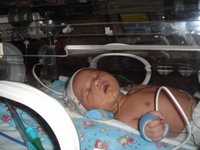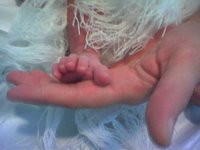Decision Making
It was a shock to receive the news of Kat's condition. Afterwards, all family members dispersed. I know myself that I just wanted time and space to process it all. They'd been given an honest view of what they could expect - best and worst-case scenarios. At best, Kataraina could respond to the medication, swallow, breathe unassisted, wake up, move and possibly learn to walk at some stage or maybe learn a couple of words. At worst, she would never walk, never talk and, either way, she faced a lifetime of medication and possibly seizures.
Because it had already been almost two weeks since she was born, her elevated glycine levels may already have caused quite significant brain damage, and the fact that she was almost asleep from birth meant she could possibly have an extreme form of the condition.
So the decision was whether to medicate, knowing that it may or may not work, that she may face a life of debilitation and would need 24/7 care OR choose not to start the medication, take the machines away and she would most likely die. They had also found, by this time, that she had a collapsed lung from pneumonia and a broken collarbone, which happened during labour. Either way, if the decision was to medicate, it had to begin as soon as possible.
And so it was left to the parents - should their baby be kept alive or allowed to die?

.jpg)




